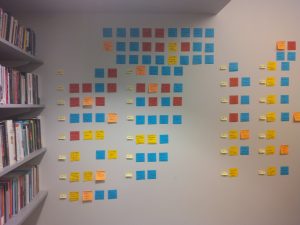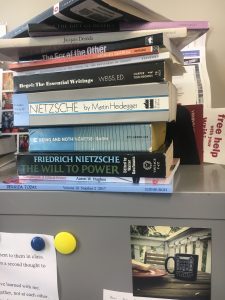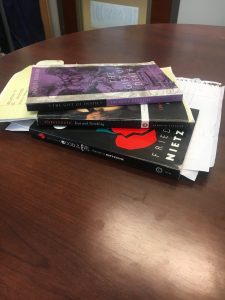by Nathan Loewen, Department of Religious Studies
“An ePortfolio is not an ePortfolio is not an ePortfolio” is what Kathleen Yancey told us at a portfolio workshop hosted by UA’s Office of Institutional Effectiveness. Dr. Yancey said this shortly after asking everyone in the room to adopt a student’s perspective in evaluating example scenarios for ePortfolios. As we discussed further examples, she developed her key points about the best ePortfolio outcomes:
- demonstrate critical judgment about someone’s reflective process about their learning
- communicate how a student’s learning was intentional
In such cases, each portfolio cannot but have unique features in both its form and content. To illustrate her point, Dr. Yancey referred to the “Springboards” at CUNY’s Macaulay Honors College. The examples shown on their FAQ page demonstrate the diversity of what counts as an “ePortfolio.” It’s not so much that “anything goes” for ePortfolios. While the online format allows for all sorts of creative flexibility, there may still be institutional guidelines and limitations on their form and content. I took Dr. Yancey to be saying, however, that any ePortfolio initiative must be guided by an interest in the pedagogical utility of the ePortfolio creation process.
The most important thing I learned from Dr. Yancey about the ePortfolio process is the general underpinning of an engaging learning process: collection, selection, and reflection (See Costa and Kallick).
The most engaging assignments I have designed have students doing these activities. I would argue that the course designs that best promote engaged and active learning are based on these three activities. In other words, Dr. Yancey’s presentations on ePortfolios apply to almost any teaching and learning environment.
How ePortfolios Work
In the second workshop, Dr. Yancy explored how to make ePortfolios work. What I learned from that session is that her take on the phrase about cigars (attributed to Freud) applies to teaching in general. I find it helpful to consider how my teaching practices might be usefully conceived via the ePortfolio processes of collection, selection, and reflection.
Sometimes the approach to designing a course adopts those very processes. I know I have begun the process of conceiving a course by collecting prospective materials and artifacts rather than starting with learning outcomes. These collections take the shape of book stacks, whiteboard diagrams, itemized lists and post-it note arrangements.

Dr. Yancey described the process of creating an ePortfolio as a meaning-making process that promotes self-aware intellectual growth precisely through community interactions. Once that collection of artifacts is in place, then the process of selection begins. I think the processes of ePortfolio curation proposed by Dr. Yancey can be applied to prospective content in a course.
I find this to be a fundamental element of all effective social learning. While the teacher guides individual students through the task of producing the proposed contents for an ePortfolio, the teacher must facilitate a collaborative review with other students, too.
The very moment Dr. Yancey said this, I remembered an extensive Facebook conversation prompted by a photo posted by a friend. The thread involved dozens of people who wanted to learn more about how my friend arrived at his final decisions for course content. I then realized what my course design process regularly omits — conversation.
Conversation and Course Design
In the workshop, Dr. Yancey had faculty working in conversation groups of three on the following process:
- Dr. Yancey first led me to create general categories of proposed content. She then had me transform those general categories into granular lists of sub-categories. At a certain point of specificity, my terminology shifted towards actual items. She had me pursue that realization throughout all the previous categories to create a comprehensive collection of artifacts.
- She then had me put two artifacts at a time into dialogue. How does each one relate to the other? How do they add to, contradict, complement, or complicate each other?
- By asking these questions, Dr. Yancey had me thinking about what larger themes connected the specific items in my collection, at which point she asked me to discard one artifact from each pair!
- Only after rejecting artifacts was I ready to articulate a narrative to connect each of the remaining artifacts. By working through the questions in #2 above, I was able to see how each item could complement the others by virtue of being unique to them.
This process resonated with the one I practiced for designing a course I am teaching this term. The only difference was that I really did not talk to anyone outside my office. And I do not share an office.
While my outcome was similar, I think I will benefit from following her process more closely for future course design work. In fact, it is not unlike something my colleague, Dr. Vaia Touna, learned from the renowned professor of religious studies, Jonathan Z. Smith: “sometimes less is more.”
To prepare the course, I started out with this:

And through a process similar to Dr. Yancey’s, I ended with this:

The next time around, I wish to add conversations with peers to the process.